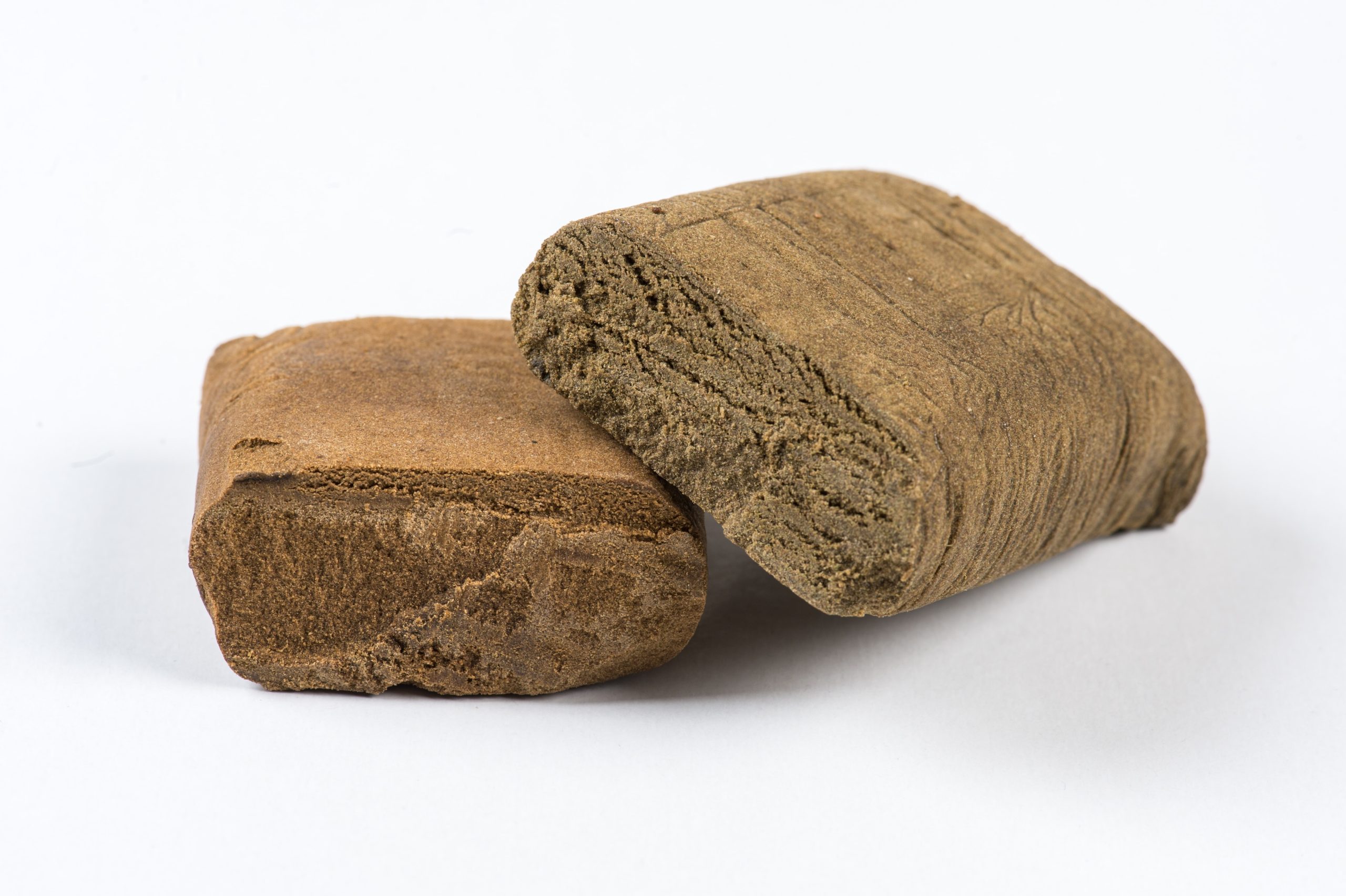
What is Hash? What is THC Wax? And What is the Difference Between Hash vs Wax vs THC?
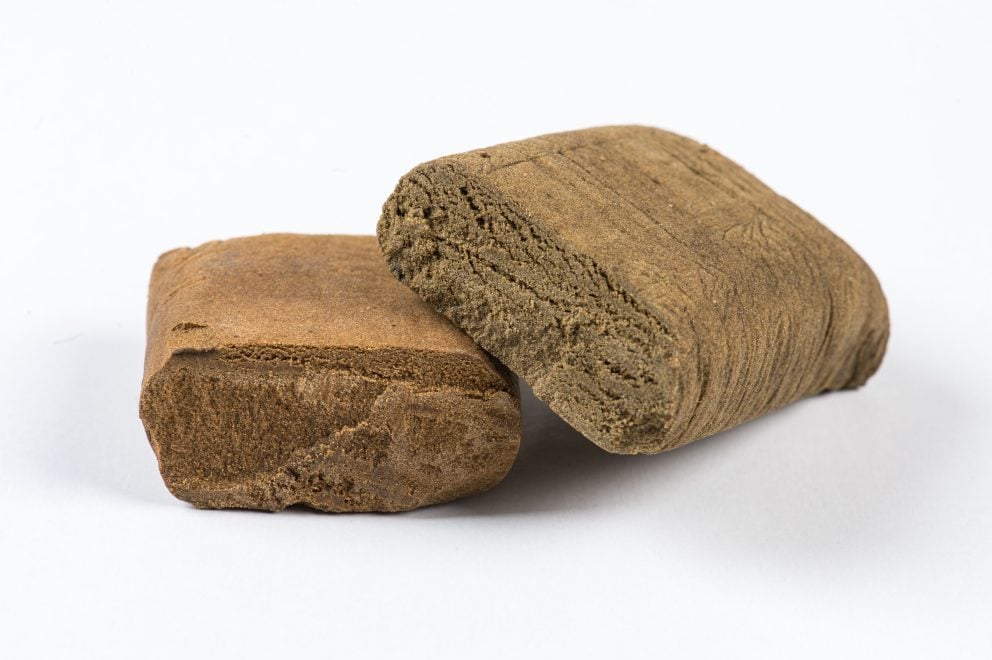
Photo by Hakuna Matata
The world of cannabis concentrates can be a bit overwhelming with quite a few different cannabis products all available on the market. The average cannabis consumer is looking for products chock full of cannabinoids and other plant chemicals people find so appealing. After all, the driving force of medical marijuana legislation is that these chemicals can all help the human body.
While people love THC because it gets you high, cannabinoids like CBD, CBG, CBN as well as terpenes and flavonoids can all help the human body in different ways. In an effort to preserve as many of these compounds as possible, innovators in the cannabis industry have devised different strategies to create concentrates. Cultivating these compounds results in products with varying consistencies, textures, and strategies to make them. They also can have vastly different potencies.
The result is a whole suite of new products. You may not know the difference when browsing at your local dispensary or picking out products but his post will break down how these products are made, classified, and the various differences between them with a special focus on hash and wax.
Apply for a Medical Marijuana Card Online Today
Join over 100,000 patients who have chosen Green Health Docs as their medical cannabis doctors. We have a 99% approval rate and offer a 100% money back guarantee!
What Is Hash?
Hash is a bit of a complex term in the cannabis industry. It’s a shortened name for hashish which is a product made of collected trichomes, which are the most compound-rich section of the cannabis plant.
Trichomes are often why people collect the dust that forms at the bottom of their herbal grinder, called kief. Beyond being super concentrated with THC these structures also contain coveted chemicals like CBD, CBG, CBN, terpenes like caryophyllene and myrcene and flavonoids. They’re essentially like our endocrine glands in that they create a wide group of chemicals which help plants thrive.
Hash has become a bit of catch-all for a few cannabis concentrates because many of them start with a form of hashish. It can be a bit confusing because hashish is an international and historically popular cannabis concentrate. It’s been in use throughout the world for centuries and even makes an appearance in One Thousand and One Nights in the story of the hasheesh eater.
Hashish is often made by extracting kief and the natural resin found within flowering cannabis buds then pressing them together into a solid brick. Its vast notoriety means it has other names from other languages including chars, hasheesh, kif, bhong and ganja.
Innovations in the industry have led to new ways of extracting the trichomes from cannabis buds and making more modern forms of hash. More commonly cannabis creators use an ice water bath to separate the delicate trichomes from the cannabis plant. When processing the bathing plants the more resin dense trichomes will sink while much of the plant material will float.
By using ice water you preserve many of the chemicals including the sensitive terpenes similar to how cold-pressed juices tend to preserve more nutrients. Many plant chemicals can become denatured due to heat, or light. Did you know that if you overheat THC it can become CBN which will make you tired rather than high?
Innovations in the process of hash making have led to cannabis creators doing work to extract as many of these chemicals while eliminating as much plant material. Burning plant material can cause cellular damage. While cannabis is not quite as cancer-causing as tobacco, the overall goal of medical marijuana is to utilize all of the beneficial cannabinoids and other chemicals without putting your health at risk by exposing you to carcinogens.
After all, many of these chemicals can serve as antiinflammatories, pain relievers, and ideally prevent cancer. The more plant material you remove the cleaner the smoke. There are even pure THC crystals one can smoke available on the market.
Hash has become a bit of a shorthand for a few cannabis concentrates. This is mostly because most strong concentrates require the cultivation of kief as a first step or begin with hash as their main ingredient. With further processing you can get other concentrates and the texture of the concentrate can dictate its name for example: shatter, wax, crumble, and budder are named for their texture.
However, there are also different products named for their process of cultivation. Dry sift hash is made differently from bubble or ice water hash or traditional hashish. Dry sift hash is used through a series of complex sifting processes to extract trichome heads from the stalks to again eliminate more plant material. Butane hash oil is also named for a process using butane to help extract many of these chemicals.
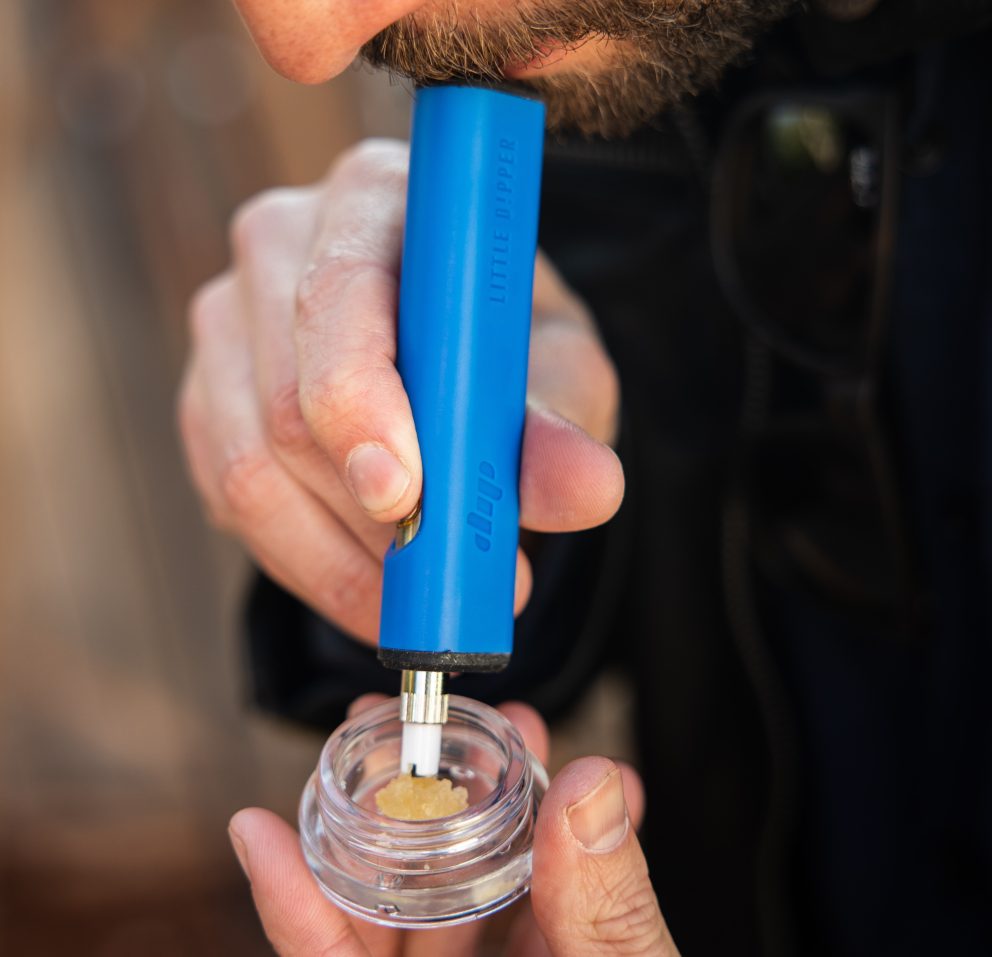
Photo by NisonCo PR and SEO
Hash Vs Dabs
Another common collection of concentrates is dabs. The hash vs. dabs debate can cover a few different products and even include some crossover. Hash is the core ingredient to most concentrates and after some additional processing other concentrates can be made that are under the hash umbrella.
Common hash products are:
- Hand-rubbed Hashish: Think of this as OG hash as it is the more common way people have made hash throughout history. Cannabis is rubbed to remove as much resin as possible which is often rolled into balls.
- Dry-Sieve Hashish: This is the most common form of hash where screens of various sizes are used to finely grind up cannabis collect trichomes then collect the resin within.
- Bubble Hash: Ice baths and cold water are used to collect trichomes which are then compiled into a batch. This extra process can add to its cost.
Other products that can fit under the hash umbrella
Dabs are concentrates that are “dabbed” onto an apparatus like a dab rig or water pipe. A small dab of product is heated which emits smoke or vapor which when inhaled gives a stronger high. Given the lack of plant material and concentration of cannabinoids it can hit so much harder. While dabs may seem new as far back as the 1960s soldiers would use acetone or petrol to extract THC from cannabis.
The main qualification for something to be called a dab is that it can be used to dab. Meanwhile, hash is a name for products with a high quantity of trichomes. Many of the same concentrate products could potentially be named in both categories. Often, when people are referring to dabs they are referencing butane hash oil or honey oil however any product that can be dabbed could be considered a dab.
What Is Hash Oil?
Hash oil is made from hash and trichomes which are treated with chemicals like butane or CO2 to separate the cannabinoids like THC from the plant matter. Butane hash oil is made by exposing raw cannabis flower to butane which lets the cannabinoids get filtered out with the butane.
The butane is then removed either by being left to evaporate or blasted with heat or a vacuum to extract it from the mixture. What remains is often resinous. While called butane hash oil it can be a bit more like a silky wax rather than your average olive oil. When using this method the final result could be shatter, honeycomb, oil, or wax depending on its texture. Again, hash oil tends to be resinous and not fully liquid.
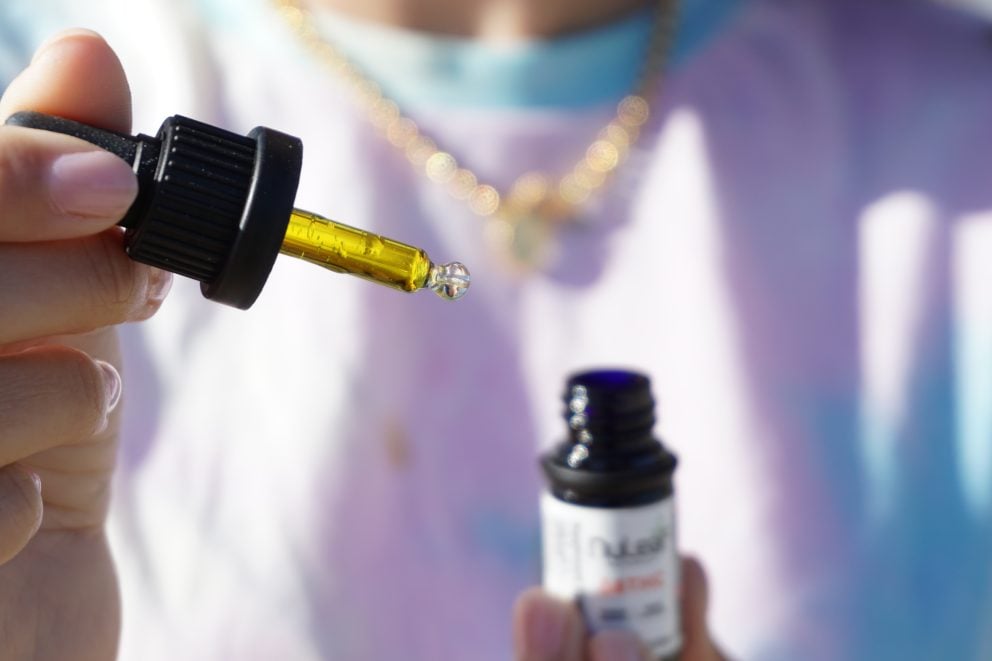
Photo by Elsa Olofsson
Difference Between Hash And Hash Oil
The main difference between hash and hash oil is that hash is the ingredient and hash oil is the final product. Hash or hashish is a collection of trichomes that are bunched together in a brick or bundle. It can sometimes be a blend of the trichomes and resin or just a densely packed bundle of dusty looking plant material.
Hash oil is then a concentrate that’s made from this hash which is treated with chemicals to separate all of the cannabinoids and terpenes that flow out in an oily texture. Despite being named oil it can be a bit more solid and resinous and can be further distilled to make “red oil.”
What Is THC Wax?
THC wax is similar to butane hash oil in how it is made. The only difference is that it takes on a waxy texture like beeswax or candle wax. Many cannabis concentrates are very similar in nature and that’s why they can often be called hash and dabs indiscriminately. The reason being that they’re essentially made using the same process and used the same way, the only major difference being their texture.
THC wax is also made by cannabis or hash being blasted with butane or CO2. This separates many of the cannabinoids from the core plant material. Some other lipids may be filtered out in the purification process. Wax can be yellow, brown, or golden and can often be odorless because some terpenes may be filtered out.
Difference Between Hash And Wax
People new to hash may wonder, “Is Hash The Same As Wax?” as the terminology can often seem interchangeable. They are however different products as hash is often just a concentration of trichomes collected from cannabis.
Again, the main difference between hash and wax is that hash can be used to make wax. Hash, while it can sometimes be resinous, is also often a claylike resinous collection of trichomes. It’s mostly a solid and is then distilled to make other concentrates. It can contain plant matter like small stems or leaves.
Hash while trichome rich can be less potent with a potency of 20-60% THC which is more than the average joint but not as much as wax which can be from 60-90% THC. This is because wax is further refined. It can have an oily and waxy consistency. It does not contain any plant material and can often be purely cannabinoids.
Another major difference is that wax is made using chemical extraction while hash is often all natural with the only potential added ingredient being water.
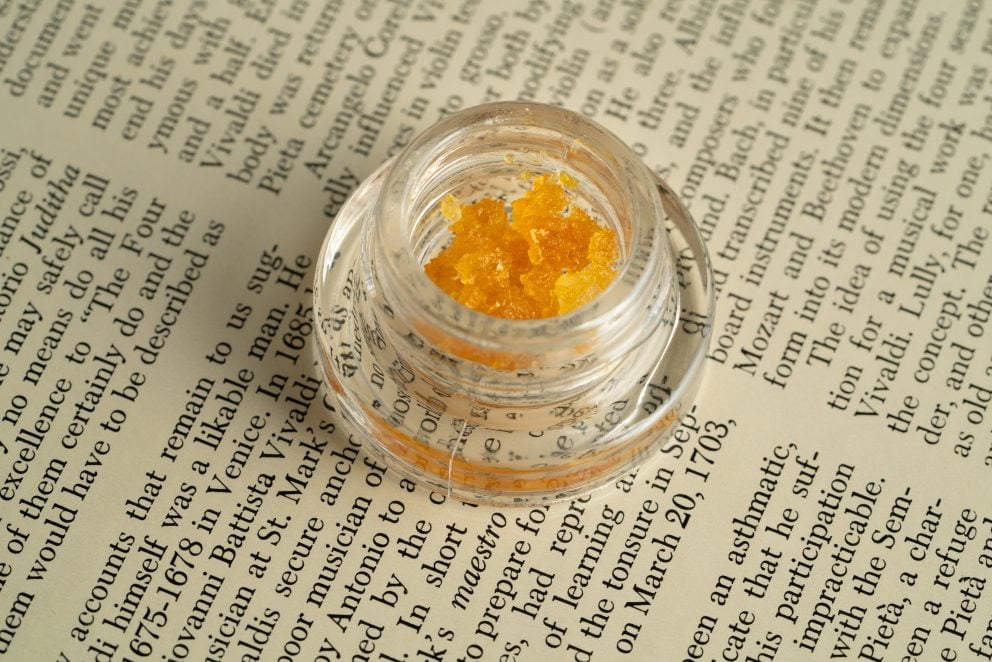
Photo by Nick Harsell
Hash Oil Vs Wax
Hash oil and wax while made using similar processes are mainly different due to their texture. Hash oil can be a bit more viscous and, obviously, oily while wax can be a bit more solid. This also holds up to heat as hash oil can tend to become more oily when heated while wax can stay somewhat solid and maintain a sticky texture.
Wax can be made from hash oil that’s further treated to eliminate more lipids and fluids or it can be made from straight cannabis flower. Hash oil is often smoked or vaped while wax is often dabbed or can be added to joints to give them an added potency. Both can be used to make moon rocks or coat joints in kief.
Difference Between Hash Oil And THC Oil
There is a major notable difference between hash oil and THC oil. Hash oil is made from hash made blasting hash with butane to cultivate the cannabinoids and terpenes while eliminating the plant material while THC oil is an infusion.
Hash oil tends to be stronger and have a higher concentration of THC as it’s made from hash not straight cannabis. Again, hash is more concentrated so by weight it will naturally have more cannabinoids.
THC oil or cannaoil is made by gently cooking cannabis with oil to infuse it with THC. By slow cooking the cannabis in oil over a low heat you can infuse the oil with cannabinoids and terpenes into the oil. For a simple recipe for THC oil check out this post.
Hash oil has a higher concentration of cannabinoids because it’s made from a higher concentrated product. It also is made using solvents to separate the cannabinoids from the plant material which also increases its potency. Another key difference is that hash oil can be challenging and ill-advised to try to make on your own.
Final Thoughts
Cannabis products are continuously evolving. Cannabis enthusiasts are discovering new ways to preserve as many of the vital phytochemicals as possible for a more full spectrum effect on your endocannabinoid system. Not to mention, the goal of increasing your highs and access to cannabinoids.
While at first it can be intimidating, here’s hoping that this brief and straightforward breakdown of these products helps you not only feel better about trying these products but also to find the right one for you.
Before you try these products consider getting your medical marijuana card to get better access and more safely tested products. To make the process simple and easy try using Green Health Docs to get started.
 This article has been reviewed by Dr. Anand Dugar, an anesthesiologist, pain medicine physician and the founder of Green Health Docs. Graduating from medical school in 2004 and residency in 2008, Dr. Dugar has been a licensed physician for almost 20 years and has been leading the push for medical cannabis nationwide.
This article has been reviewed by Dr. Anand Dugar, an anesthesiologist, pain medicine physician and the founder of Green Health Docs. Graduating from medical school in 2004 and residency in 2008, Dr. Dugar has been a licensed physician for almost 20 years and has been leading the push for medical cannabis nationwide.
